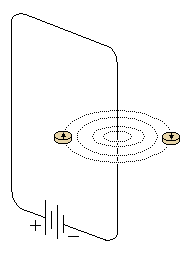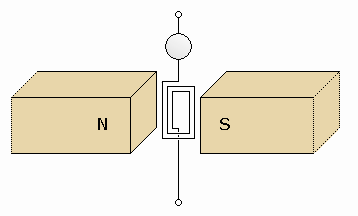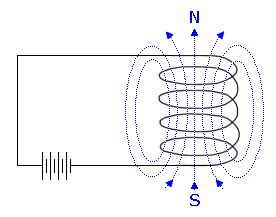| Basic Radio is a free introductory textbook on electronics based on tubes. See the editorial for more information.... |

|

Home  Fundamentals Fundamentals  Capacitance and Inductance Capacitance and Inductance  Magnetic Fields of Currents Magnetic Fields of Currents |
||||||||
| See also: A.C. Ammeters | ||||||||






|
||||||||
|
Magnetic Fields of CurrentsAuthor: J.B. Hoag It has been established that a magnetic field is produced whenever an electrical charge moves. If the charge is at rest, only the electrostatic field exists. Thus a magnetic field exists around the electrons moving inside an atom, around a beam of electrons moving through a vacuum tube, and around the free electrons of a metal as they drift down the wire under an impressed potential.
Figure 3 E shows how, with small compasses, Oersted found that the magnetic field around a wire carrying a current exists as complete, concentric circles, in planes perpendicular to the wire.
The magnetic field around a wire, coiled into the form of a solenoid, as shown in Fig. 3 G, is the same as that around a bar magnet, with a north pole at one end and a south pole at the other. This is called an electromagnet. Its strength can be varied by changing the amount of the current flowing through it. If an iron core is placed inside the solenoid, the magnetic field becomes much greater.
|
||||||||
Home  Fundamentals Fundamentals  Capacitance and Inductance Capacitance and Inductance  Magnetic Fields of Currents Magnetic Fields of Currents |
||||||||
Last Update: 2010-11-21




